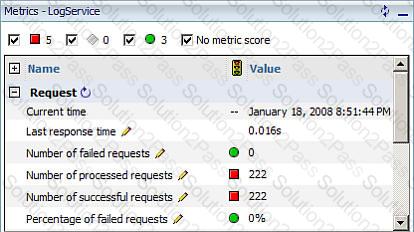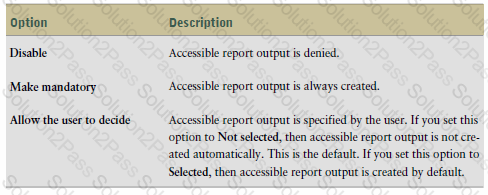C2090-623 IBM Cognos Analytics Administrator V1 Free Practice Exam Questions (2025 Updated)
Prepare effectively for your IBM C2090-623 IBM Cognos Analytics Administrator V1 certification with our extensive collection of free, high-quality practice questions. Each question is designed to mirror the actual exam format and objectives, complete with comprehensive answers and detailed explanations. Our materials are regularly updated for 2025, ensuring you have the most current resources to build confidence and succeed on your first attempt.
An administrator needs to setup security for a newly installed environment.
Which of the following is a valid step?
An administrator is evaluating system status using the Scorecard pane on the Status > System page in the IBM Cognos Administration console.
Which statement is true?
An administrator wants to describe the internal architecture and request flow for a Query service of an executed DQM report.
How is this done?
IBM Cognos Analytics is installed on a non-Windows platform. An administrator receives the following error after setting up a datasource connection:
“XQE-DS-0014 Unable to logon to the data source. An unexpected error from the JDBC driver “com.microsoft.sqlserver.jdbc.SQLServerDriver”:
“java.lang.UnsupportedOperationException: Java Runtime Environment (JRE) version 1.8 is not supported by this driver. Use the sqljdbc4.jar class library, which provides support for JDBC 4.0.”
What should the administrator do to rectify this problem?
An administrator needs to exclude users from rendering reports as PDF output.
How can this be enabled?
A report author gets the following error message:
“An error has occurred. Please contact your administrator. The complete error has been logged by CAF with SecureErrorID:2004-05-25-15:44:11.296-#9.”
How can the administrator get the complete error message?
An administrator is attempting to import a backup of the entire Content Store into an existing Content Store.
What is an instance of when an object will be kept by the default conflict resolution rule?
An environment has twenty dispatchers. The administrator wants to change one property to the same value for all dispatchers.
How can that be accomplished?
To monitor performance, an administrator has set thresholds on a system metric and notices that over time, the metric score has changed from green, to yellow, to red, and then back to yellow.
Which system metric is the administrator monitoring?
An administrator is tuning the Caching services to improve Dynamic cube report performance. At the same time, there is a need to control the memory usage and Clear Cache.
How is this done?
An administrator is checking the current activities and recognizes one activity with several successful tasks with two still running. The administrator cancels this activity.
Where will this activity be shown?
An environment is configured to use Compatible Query Mode (CQM).
Which statement is true about request flow?
An administrator is implementing security by managing and working with the Cognos namespace.
Which statement is true?
Which attribute can an administrator enable to prevent malicious scripts from reading or manipulating the CAM passport cookie during a user’s session with their Web browser?
An administrator wants to implement load balancing without using an external load balancing mechanism.
What is one approach that can be used to achieve this?
An administrator is managing authentication namespaces and needs to delete a namespace.
Which statement is true?
Which statement is true when working with datasource credentials?
An administrator has a requirement to specify system-wide accessibility settings for all entries (reports, jobs and schedules).
How can this be done?



